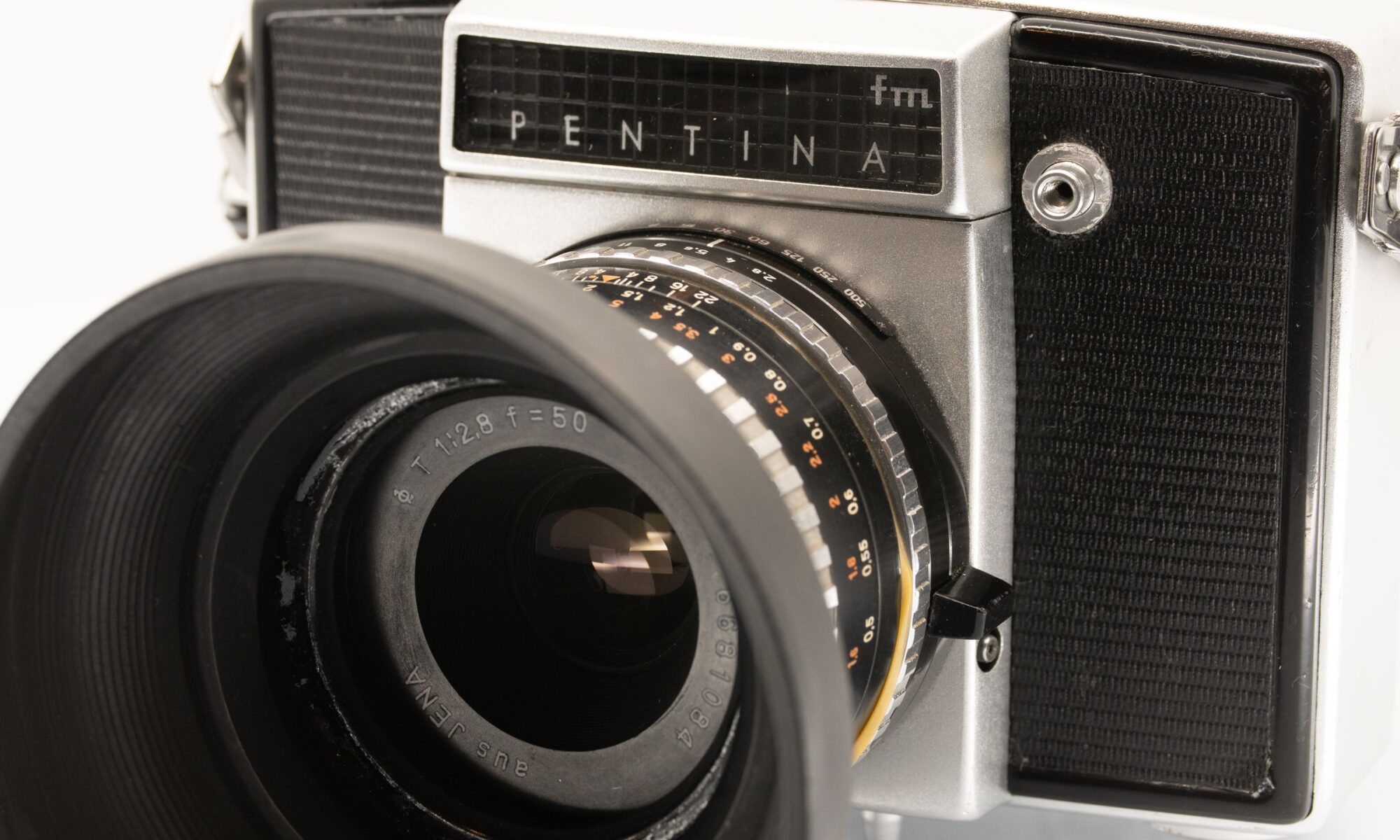Imagine a time of a camera industry in a socialist country under immense pressure to perform in a highly competitive and innovative worldwide market. And at the same time surrounded by poverty, hassled by unimaginative and reckless politicians. The 1950s and 1960s were ultimately the most dramatic times for the East German camera industry which, from its knowledge gained from the West German legacy, initially looked promising, but finally degenerated into a loss-making competition due to the unreasonable and unachievable demands of the East German system. The VEB Pentina symbolizes the immense complexity and is the embodiment of the proverb: blind pride comes before the fall.
Sometimes the history of a camera is as interesting or perhaps even more interesting than the camera itself. In the case of the Pentina, the who, where, what, when and why is almost impossible to pinpoint exactly. For example, some believe the Pentina to be a Zeiss Ikon SLR camera, others claim the camera to be from Pentacon. The fact is that no one is right, nor are they entirely wrong. Developments at the time were rapid, and the Pentina is both a legacy of Zeiss Ikon and a child of Pentacon. The former no longer existed when the Pentina was introduced and the latter had yet to be founded. In that grey intermediate phase there was the VEB Kamera- und Kinowerke Dresden, a typical socialist manufacturing company. ‘From and for’ the people. But nothing could be further from the truth. These companies were run with the whip by the government with only one goal, to make communism a rival success with capitalism. Even where consumer cameras were concerned. What West Germany could do, East Germany had to do even better and especially cheaper. The knowledge was available, but rarely the (financial) resources. And so every innovation always turned out into a feasible compromise, sometimes in bad choice of materials, sometimes in low quality of the entire product. But the Pentina became the result of the opposite, megalomania, building something that had never been built before, extravagant in design and overcomplicated in technical innovation. So much so that repairmen were reluctant to handle a defective device. The flop of the camera was already drawn at the design and between 1961 and 1965 “only” 45,000 units were eventually manufactured with as many as 7 model variants (although not all models were in fact produced). It is the camera with the least production numbers ever in retrospect. Many interesting stories have been recorded about this turbulent period in the East German camera industry, but did that make the Pentina a bad camera? On the contrary, it was indeed ultimately the black sheep, but at the same time an unmatched (and priceless) work of art of technological excellence, even if it was short-lived.
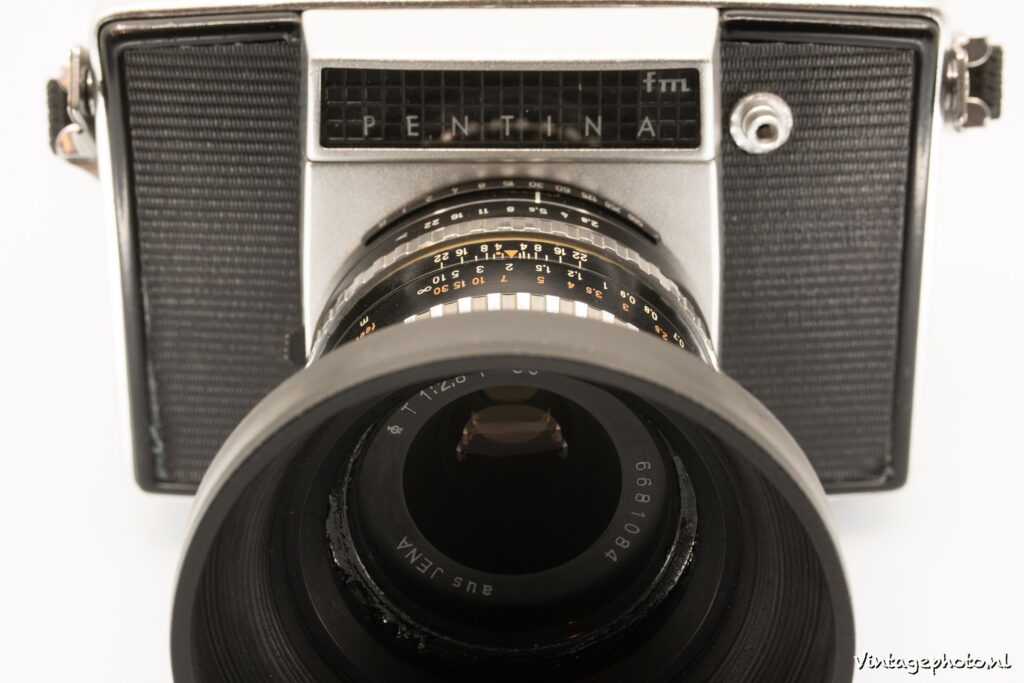

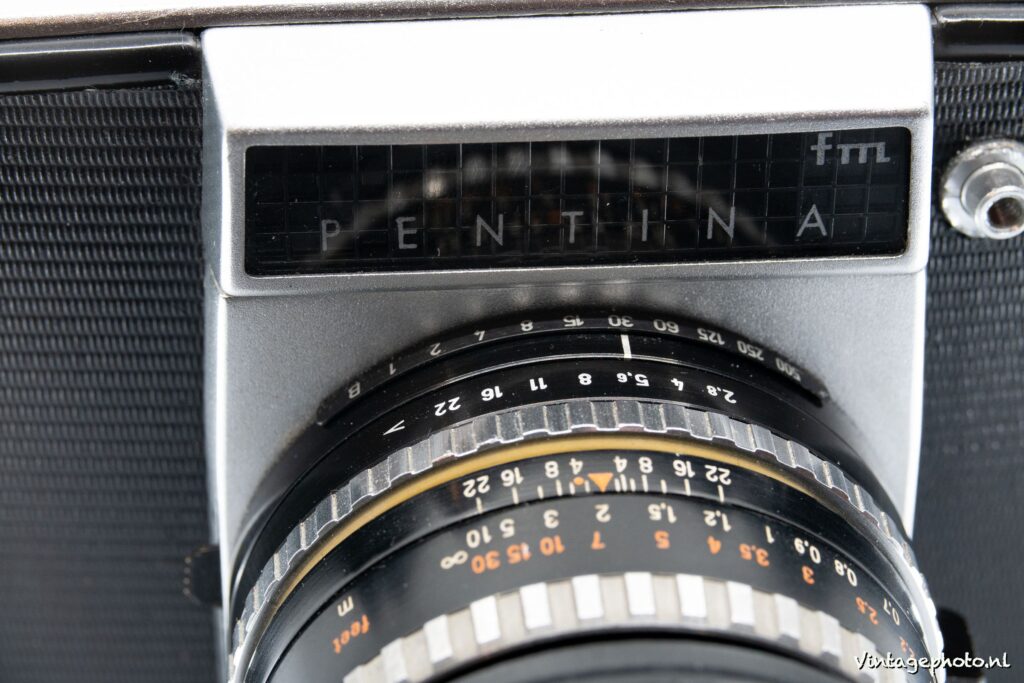
The Pentina was developed in 1958 as the first leaf-shutter camera in the ‘camera industry capital’ of Dresden that exclusively used the common focal plane shutters. West Germany (Zeiss Ikon & Carl Zeiss) produced the leaf-shutter already long time ago but also owned the patents. The East-German engineers finally engineered the first Prestor-00 reflex leaf-shutter that was used in the Pentina, a historical breakthrough. But this expensive choice also meant the camera was not affordable for the average East-German worker and the high price also was not competitive with the outside market. Even in export markets it belonged to the most expensive cameras of its class.
In detail:
- The Pentina is a SLR camera with use of common 135 film with built-in prism viewfinder (this fm topmodel has a split image and micro-prism focus aid)
- It had interchangeable lenses with the special Pentina plug-in bayonet but without shutter that was more common for leaf-shutter lenses (here it was built in the body)
- It had a simple selenium light meter with needle meter reading on top of the camera
- Film speed setting 6-1600 ASA in both, ASA and DIN scale
- On front it had adjacent aperture and shutter time rings around the lens with (semi) automatic exposure, meaning controlling aperture and shutter with one movement.
- Mirror only opens after winding the shutter
- Prestor-00 reflex leaf-shutter with exposure times from 1 s to 1/500 s and B
- Flash synchronization M or X, switchable, extremely short electronic flash times possible
- Image counter
- Self-timer (V)
- Rewind crank (bottom of camera)
- Accessory shoe (cold)
- Film type marker (bottom of camera)
- Tripod socket ¼ “
- Shutter and winder on the left side of the camera
- 4 models: Pentina, Pentina M (+additional split image focus aid), Pentina fm (top model with split image and micro-prism focus aid) and Pentina E (simple model without the exposure meter)
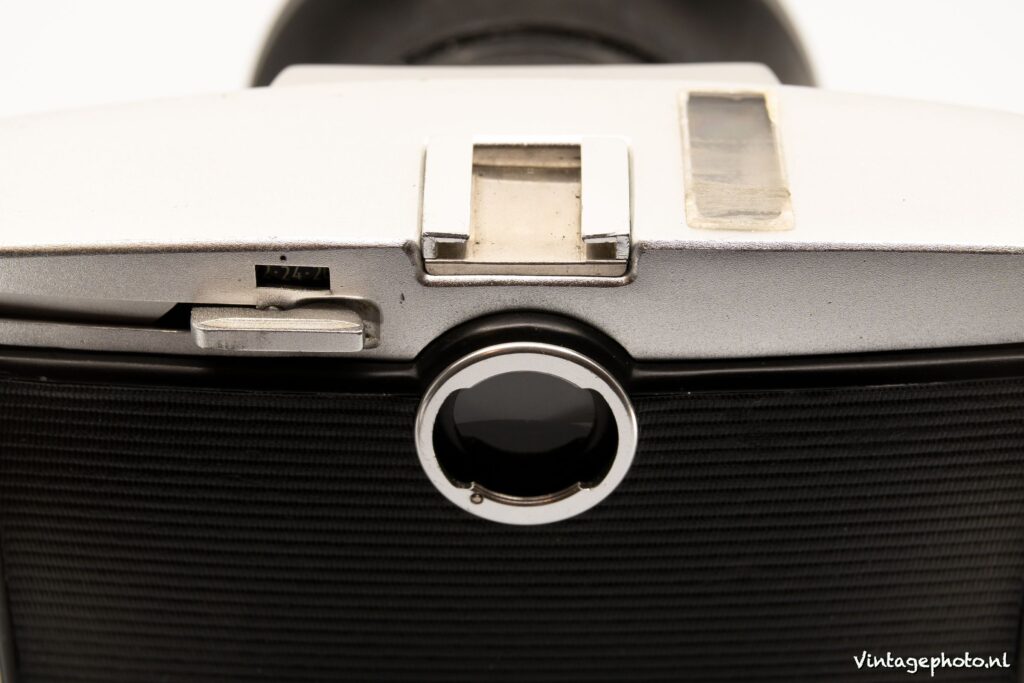
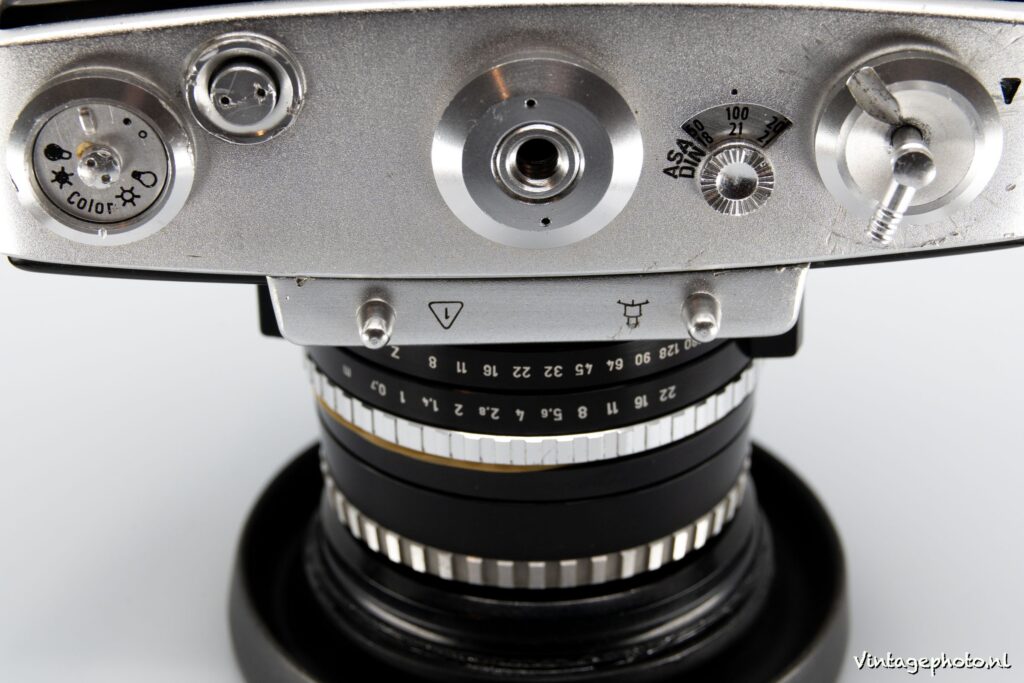
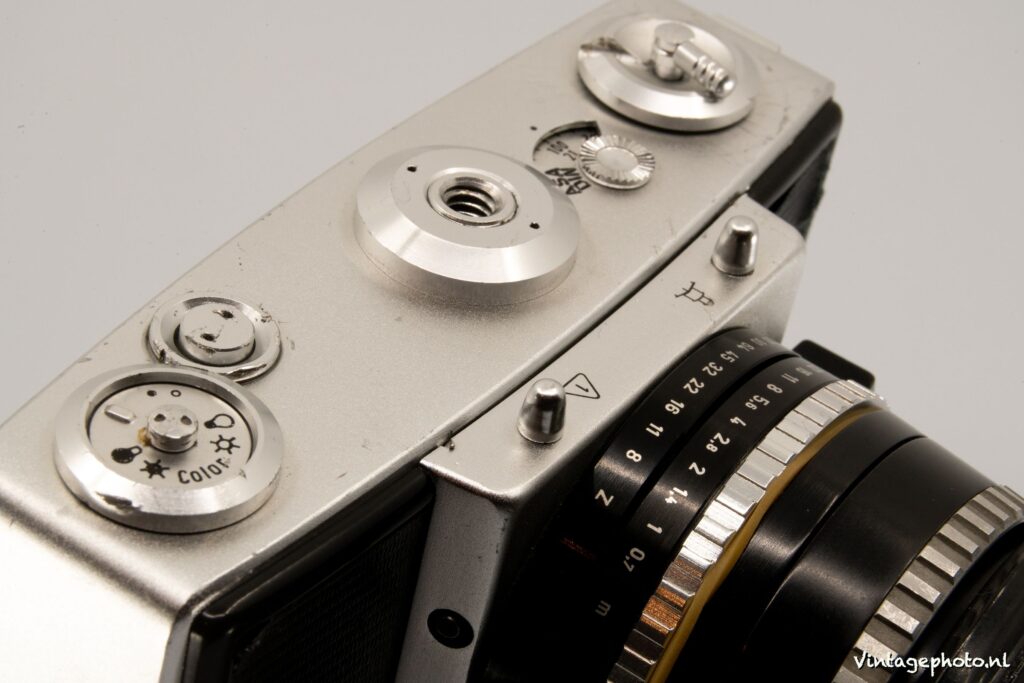
As far as I can tell, four interchangeable lenses for this camera were made. The standard and famous Tessar 50mm/F2.8 (which is reviewed here, the 1961 fm topmodel), the Cardina 85mm/F2.8 from Carl Zeiss Jena, the Meyer Domigor 135mm/F4 and the Meyer Lydith 30mm/F3.5. These were all (very) high-quality lenses.
When you grab the Pentina, you have no idea at all that it is an SLR. Rather, it is a large compact camera. The camera does weigh heavy, but it sits well in the hand. On top is just the coldshoe for accessories in addition to the (simple) light meter. With the aperture, an indicator slides up (the larger the aperture, the lower the indicator and thus the faster the needle will react to light). When the needle (which measures light through the selenium cell) is on the indicator, the correct exposure has been achieved. When you grab the Pentina, you have no idea at all that it is an SLR. Rather, it is a large compact camera. The camera does weigh heavy, but it sits well in the hand. On top is just the coldshoe for accessories in addition to the (simple) light meter. With the aperture, an indicator slides up (the larger the aperture, the lower the indicator and thus the faster the needle will react to light). When the needle (which measures light through the selenium cell) is on the indicator, the correct exposure has been achieved. The ISO/ASA can be set on the bottom of the camera (6-1600 ASA) and is linked to the light meter!
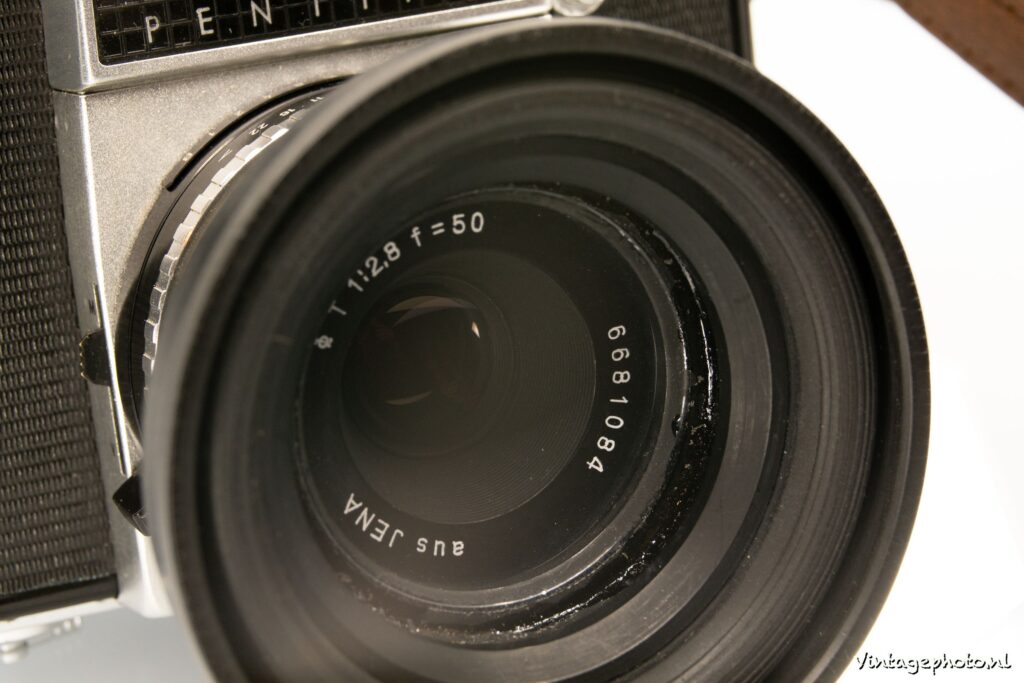

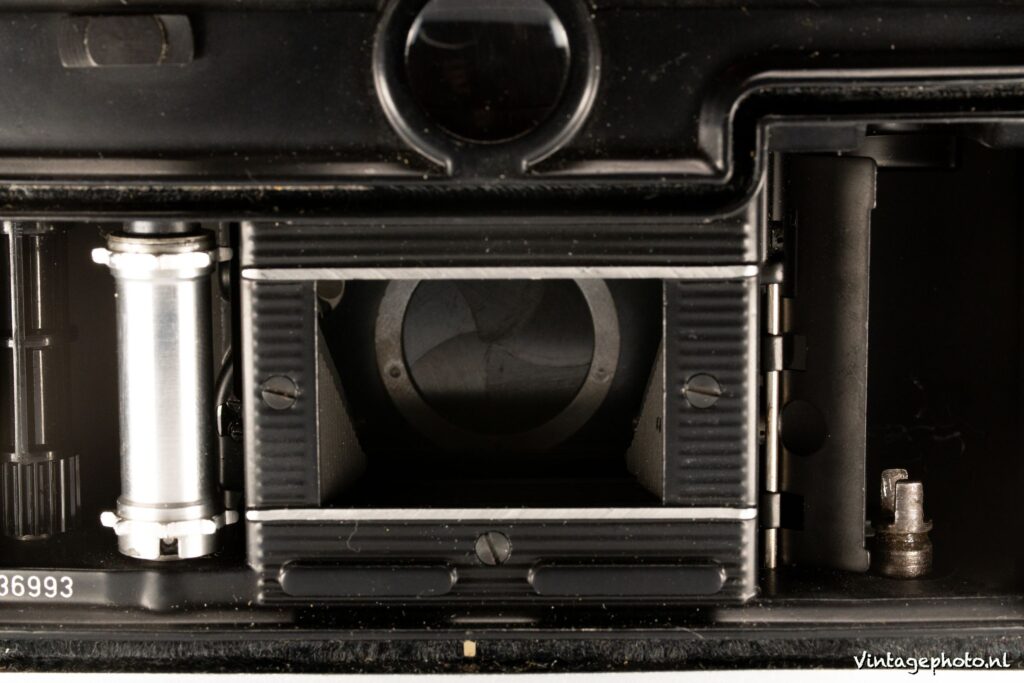
On the back is the flush button on the upper left, which also tensions the shutter. In the center is the viewer which is large and bright and has a microprism with a fresnel screen so that just like a rangefinder it is easy to focus on straight lines, for example. On the back is the flush button on the upper left, which also tensions the shutter. In the center is the viewer which is large and bright and has a microprism with a fresnel screen so that just like a rangefinder it is easy to focus on straight lines, for example. When the images slide over each other, the image is sharp. The only thing left on the front is the shutter button. The only thing left on the front is the shutter button. Below the camera are the tripod socket, the “memory” button for the inlaid film (color/black) and the art deco rewind button which contains a small lever that can be pulled out to quickly rewind the film. There is also the release button for activating the rewind mechanism. The lens and fixed shutter are on the front, that is, the lens barrel is interchangeable and the shutter (B-1/500s) and aperture (F2.8-F22) are fixed on the body. Aperture is semi linked to shutter speed, so fixed combinations of a shutter speed with corresponding aperture can be made. By choosing a combination, appropriate combinations can be chosen on the left and/or right with the aperture ring (e.g. F4/60, F5.6/30, F8,/15). The front adjustment wheel can be used to focus.
On the side of the lens is another switch for manual M or X synchronized flash and shutter delay V. Remarkably, the Pentina is capable of flashing up to a speed of 1/500s (through the leafshrutter). Something that a “normal” focal curtain shutter cannot do. The M can only be used for flash bulbs. The flash connection (cable PC sync) is located on the left side of the lens. It seems that the Pentina was made specifically for left-handed use with the main buttons on the left side. The film also runs from right to left. When inserting, the film counter inside the back must be set to 38 (via a button at the top of the take up spool). First make sure the film turns up properly with the wind lever. Then close the back and turn the lever twice and take a picture so that the counter is at 0. Then the first picture can be taken.
Loosening the back takes some practice. Right below the back is a slider that must be pulled all the way out. Then it is best to grasp the recess around the viewfinder to pop off the cover. Rewinding is easy by pressing the release button, pulling the lever out of the rewind knob and (continuing to) turn to the right. Changing lenses is done as with many Pentacon systems, namely by turning the small metal bezel in the middle to the left, the lens then looses off the bayonet opening. So, the lens does not need to be turned when removing or attaching. Always make sure that the small pin on the lens fits into the ’12 o’clock’ slot on the body. Than twist the bezel to the right to fasten it.
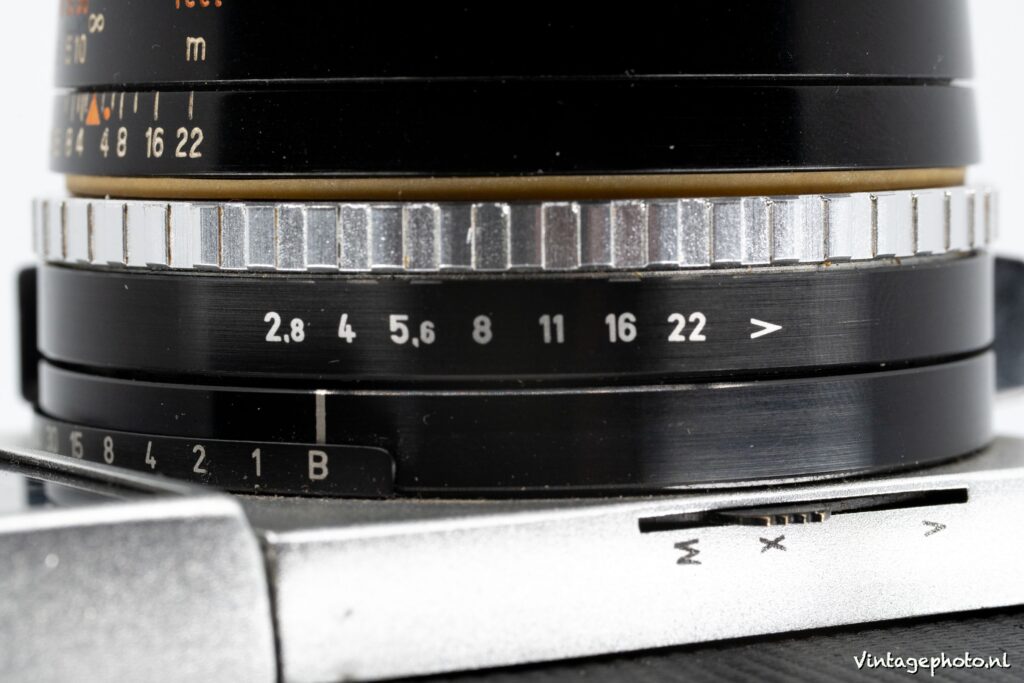

The pentina is undoubtedly one of the most inconspicuous SLR cameras and therefore very interesting. It possesses a certain compactness and operates as in a mix of rangefinder and SLR. There are few buttons, the operation is simple and that also makes the camera very pleasant to use. Focusing is very easy, as is proper metering.
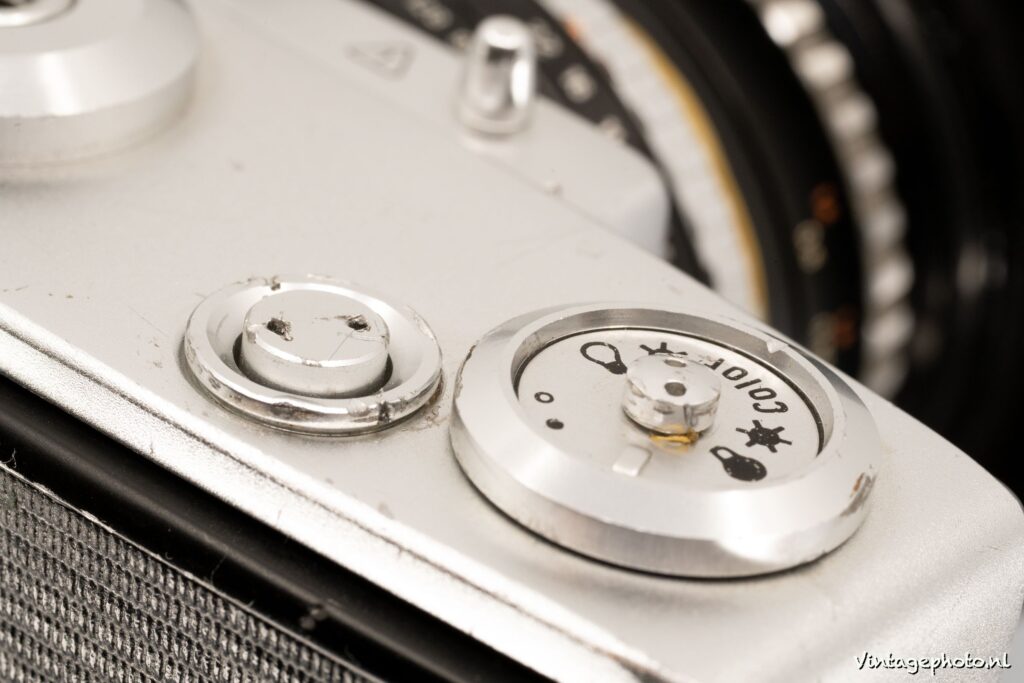
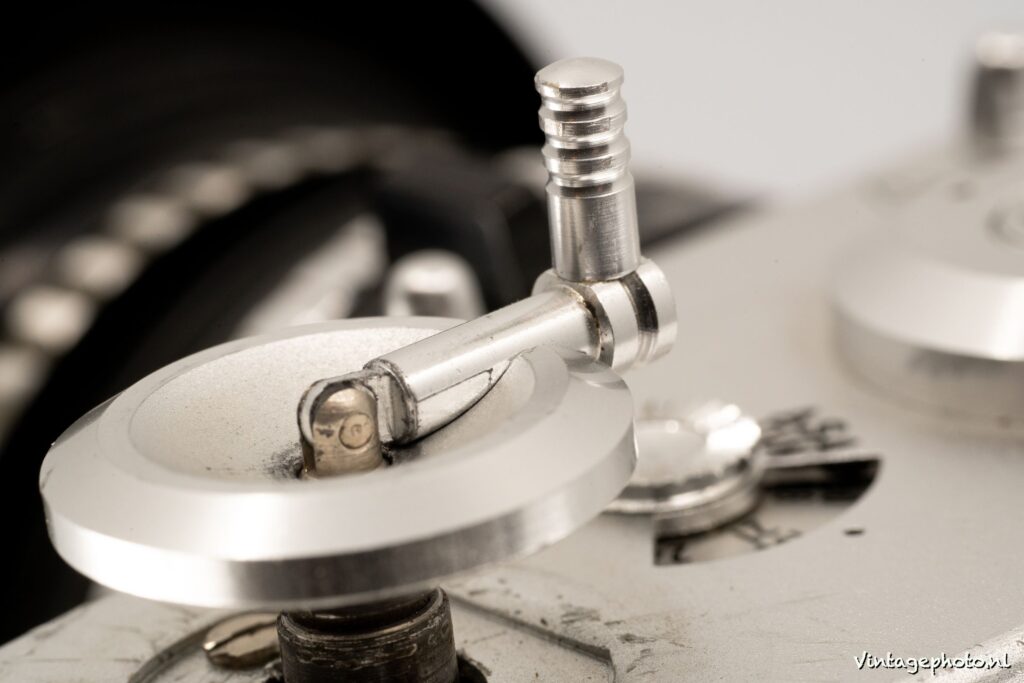
The Pentina is a camera that lends itself better for real use than put it in some display case. It is really not a flashy design, but designed as a real utensil. Simple and at the same time brimming with technical ingenuity. At first I had to get used to the pentina, but every day it contains me better and now I’m ready to shoot the first roll, because I’m very curious about the results. Yes, the camera feels good to actually go out with it. A camera that most consumers couldn’t afford in the sixties, a Pentacon with Leica ambitions. A must have, but make sure that it works, but it is beyond repair once it breaks!
Additional links:
Manual for the Pentina
The very interesting and full Pentina history (in german)

